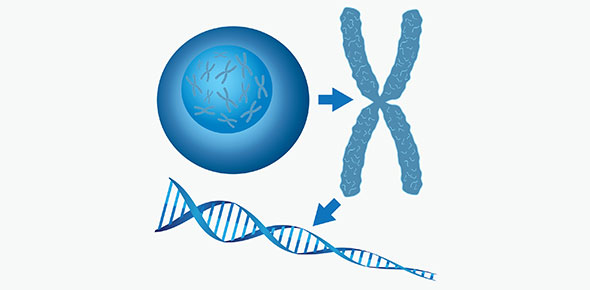Related Flashcards
Related Topics
Cards In This Set
| Front | Back |
|
Health Promotion and the School-Age Child: Bicycle Safety
|
- Ensure chlid wears helmet and/or pads when bycycling
|
|
Acute and Infectious Respiratory Illnesses: RSV
|
- RSV is more common during winter and spring
- Recommend parens use a cool-air vaporizer to provide humidity - Suggest child rest during febrile illness - Instruct parents to assist children to maintain adequate fluid intake -Limit use of nose drops or sprays - Apply an ice bag or heating pad to the neck to decrease pain from enlarged cervical nodes |
|
Skin Infections and Infestations: Preventing the Spread of Pinworms
|
- Use proper hand hygiene
- Avoid sharing clothing, hats, combs, brushes, and/or towels - Keep the child from touching the affected area by using distractions - Clean surfaces that might be harboring causative agents including bed linens, clothing, and furniture |
|
Health Promotion of the Adolescent: Communication Techniques
|
- Adolescents develop jargon within their peer groups. They are able to communicate one way with peer groups and another way with adults or teachers. Development of communication skills is essential for adolescents
|
|
Physical Assessment Findings: Abdomen
|
- Without tenderness, no guarding. Peristalic waves may be visible in thinner children
- Shape symmetric and without protrusions around the umbiicus - Infants and toddlers have rounded abdomens - Children and adolscents should have flat abdomen - Bowel sounds should be heard q5-30 seconds - Descending colon: Cylindric mass that is possivly palpable in the lower left quadrant due to the presence of stool |
|
Musculoskeletal Congenial Disorders: Findings Associated with Scoliosis
|
- A complex deformity of the spine that also affects the ribs
- Scoliosis is characterized by a lateral curvature of the spine and sinal rotation that causes rib asymmetry - Not all curvatures of the spine are scoliosis. A curve of less than 10 degree may be a postural variation - Idiopathic or structural scoliosis is the most common form of scoliosis and can be seen in isolation or associated w/ other conditions |
|
Health Promotion of the Toddler: Meeting Nutritional Needs
|
- Toddlers are generally picky eaters who will repeatedly request their favorite foods
- Toddlers generally prefer finger foods because of increasing autonomy - Regular meal times and nutritious snacks best meet nutrient needs - Dietary recommendations outlined by US Dept of Afriuclture |
|
Nutrition of Adolescents: Findings Associated w/ Severe Calorie Restriction
|
- Less than the fifth percentile on the growth chart for wt
- Malnourished appearance - Signs of dehydration - Decreased activity level - Developmental delays - Negative interactions between the child and parents - Difficulty being soothed |
|
Health Promotion of the Toddler: Promoting Sleep
|
- Ensure crib mattresses fit tightly
- Avoid drop-side cribs due to the risk of suffocation - Ensure crib slats are no farther apart than 6cm - Leep pillows out of crib |
|
Hematological Disorders: Iron Deficiency Anemia
|
- Most common anemia in children ages 6mo-2yr
- Usually resluts from a inadequate dietary supply of iron - Manifestations are related to the degree of anemia and the result of decreased oxygen to the tissues - Prolonged anemia can lead to growth retardation and developmental delays, fatigue, tachycardia and irritability |
|
Safe Administration of Meds: Site Selection
|
SubQ sites
- Upper arm - Abdomen - Anterior Thigh IM Site - Vastus Lateralis: recommended for infants and chlidren less than 2 yrs - Ventrogluteal: Can be used for children ages 2 and older - Deltoid: Not as painful as vastus lateralis; should not be used in infants/children with underdeveloped muscles |
|
Physical Assessment Findings: Identifying Unexpected VS
|
Temp
- Birth-1yr: 97.7 to 98.9 - 1-12yrs: 98.1 to 99.9 - 12 yrs to older: 97.8 to 98.0 Pulse - Birth to 1wk: 100-160/min - 1 wk to 3mo: 100-220/min - 3mo to 2yrs: 80-150/min - 2yrs to 12yrs: 70-110/min - 12yrs and older: 50-90/min Respiration - NB: 30-60/min - NB-1yr: 30/min - 1-2yr: 25-30/min - 2-6yrs: 21-24/min - 6-12yrs: 19-21/min - 12 and older: 16-18/min BP - Age, ht, and gender all influence BP readings. Readings should be compared with standard measurements |
|
Acute Neurological Disorders: Findings Associated with Bacterial Meningitis
|
- Seizures w/high pitched cry
- Fever and irritability - Bulging fontanels - Possible nuchal rigidity - Poor feeding - Vomiting - Positive Brudzinski's sign and Positive Kernig's sign - Headache, Fever/chills, vomiting, photophobia |
|
Cardiac Glycosides: Monitoring Laboratory Values
|
- Perform CBC with differential to determine anemia and/or infection
- Hct, Hgb, BUN, creatinine, and urine specific gravity levels are usually elevated with dehydration - Stool test for occult blood - Perform a urinalysis |
|
Diabetes Mellitus: Determining Adherence to TX plan
|
- Reinforce proper foot/nail care
- Provide nutritional guidelines - Instruct children and their families in guidelines to follow when sick - Instruct children and their families what to do if they experience S&S of hypoglycemia |






